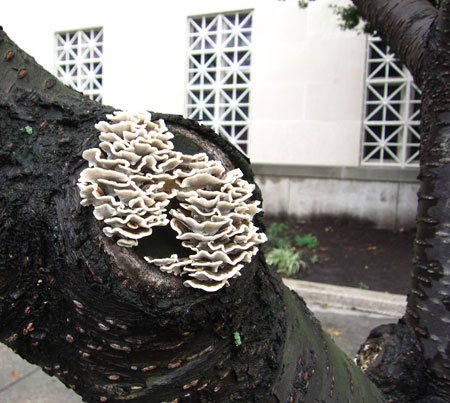Mushroom management typically is associated with organizations filled with dead wood. But what if your organization contains some employees that show signs of life? Have no fear, mushroom management can still produce results. Move those employees to windowless offices and assign them TPS reports. If necessary, order trepanation for them. Then lean back and wait for their personal development.
Crappy newspapers executives are historical leaders in mushroom management. John Paton, who apparently isn’t a crappy newspaper executive, is advocating change in the newspaper business. A lot of change. Nothing is worse for bureaucracy than change. He must be stopped. Repeat until succeed must proceed.
Another honored management approach is Linus Torvalds’ kernel management style. Torvalds decisively advocates non-decision-making:
The name of the game is to _avoid_ having to make a decision. In particular, if somebody tells you “choose (a) or (b), we really need you to decide on this”, you’re in trouble as a manager. The people you manage had better know the details better than you, so if they come to you for a technical decision, you’re screwed. You’re clearly not competent to make that decision for them. … So the name of the game is to _avoid_ decisions, at least the big and painful ones. Making small and non-consequential decisions is fine, and makes you look like you know what you’re doing, so what a kernel manager needs to do is to turn the big and painful ones into small things where nobody really cares.
Producing large reports helps to avoid making decisions, or least to avoid making any decisions that anyone can locate and complain about.
Ben Balter has proposed post-forking for enhancing WordPress editorial workflow. With such an innovation, “any content becomes either publicly or privately collaborative.” This combines all the benefits of editing with all the benefits of meetings. It’s potentially a huge contribution to bureaucracy.
That’s all for this month’s Carnival of Bureaucrats. Enjoy previous bureaucratic carnivals here. Nominations of posts to be considered for inclusion in next month’s carnival should be submitted using Form 376: Application for Bureaucratic Recognition.

You essay implies that mushrooms only grow on dead wood. This is far from the case. For example there are over 4000 species of mycelium that grow on the roots of Douglas Fir trees. Some mycelium may be minute, forming a colony that is too small to see, and some may be large. There is a site in eastern Oregon that has a contiguous growth of mycelium that is the size 1,665 football fields and that is 2,200 years old. This is the largest “plant” in the world ( see “Mycelium Running: How Mushrooms Can Help Save the World” by Paul Stamets)– On reflection there are a considerable number of similarities between mycelium and bureaucrats. I suggest that COB explore this topic
Thanks for your knowledgeable comment. We agree that bureaucrats, like mushrooms, can help save the world.